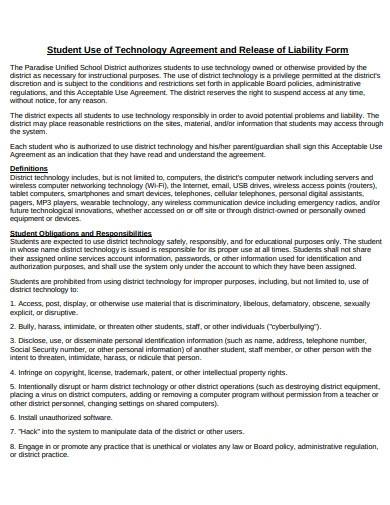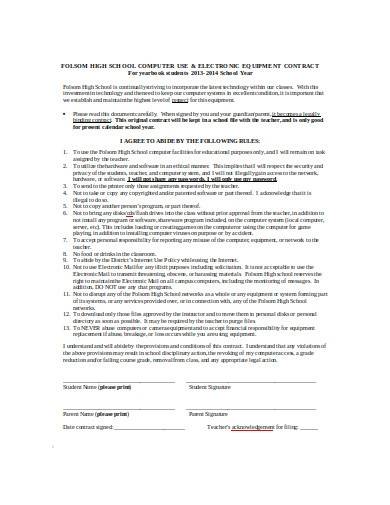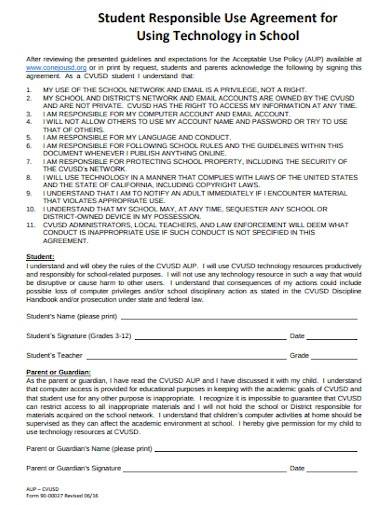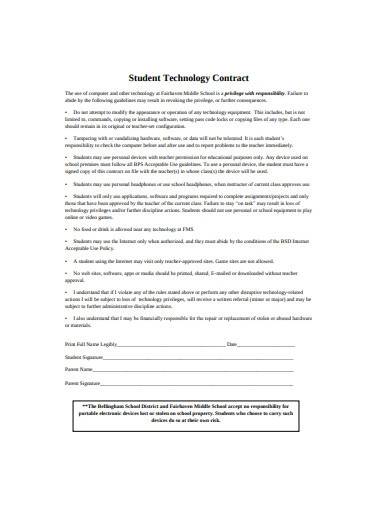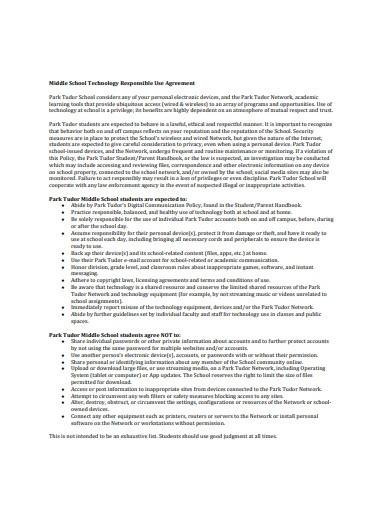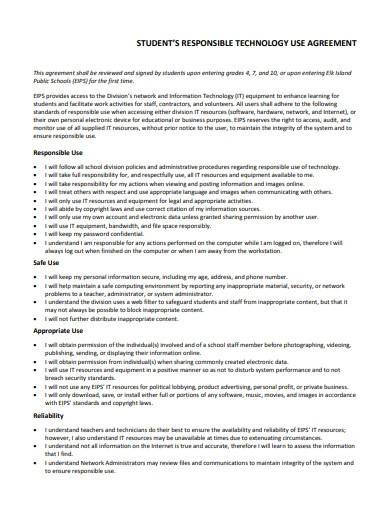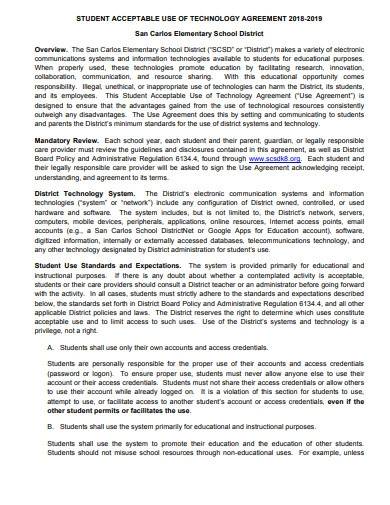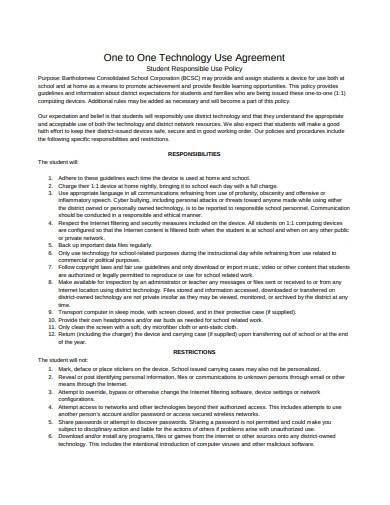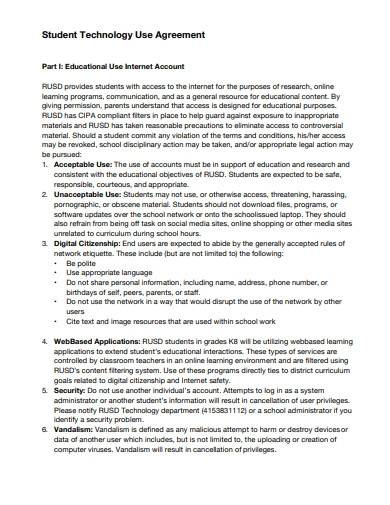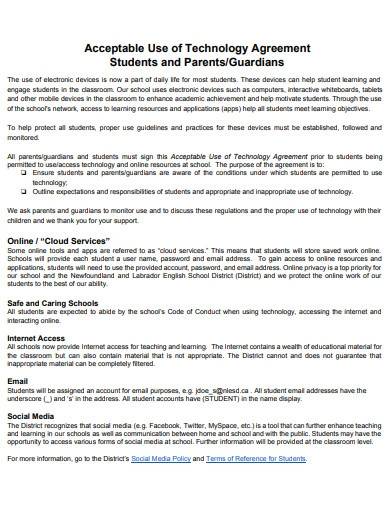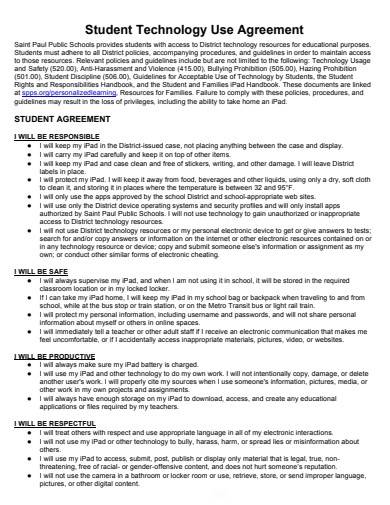If you’re a teacher for many years, you already have direct experience with some sorts of problems in your own classroom such as seeing students’ attention drifting out the window, disappearing into their electronic phones and laptops, and many other things that can fully distract them. In this article, we will discuss the helpful ways that you should remember while making your student technology use agreement. Please continue reading!
FREE 10+ Student Technology Use Agreement Samples
1. Sample Student Use of Technology Agreement
2. Student Technology Use Agreement Template
3. Student Responsible Use Agreement for Technology
4. Sample Student Technology Contract
5. Middle School Technology Responsible Use Agreement
6. Student Responsible Technology Use Agreement
7. Student Acceptable Use of Technology Agreement
8. Technology Use Agreement Template
9. Student Technology Use Agreement Sample
10. Sample Acceptable Use of Technology Agreement
11. Student Technology Use Agreement
What is a Student Technology Use Agreement?
A student technology use agreement is a legal document when a student agrees to abide by any rules or regulations for the use of any type of electronic or digital devices that are attached to this formal written contract made and implemented by the teacher or school institution.
How to Create a Student Technology Use Agreement
If you’re a teacher or the head of your school department who wants to create rules and limitations for your students in terms of using any kinds of electronic gadgets or devices, then you may consider having a student technology use agreement. This will help you in teaching your students on the proper usage of gadgets and instill self-control to them.
But, before you begin, you should first draft and finalize an agreement to sign. And, you can easily make that with the tips below:
1. Write the legal information of the parties correctly
Make sure that you correctly write the names and every detail of the parties (student grade or year level; class sections; full names of advisers/school department heads) involved. Avoid having some typographical errors, specifically in the spelling of their basic information. If you don’t verify the details in the document, it will cause you some document problems such as legal contract issues.
2. Explain the main purpose and entirety of your agreement
A scope of work or scope statement in a terms-of-use agreement can be lengthy, especially when you write all the significant details. It is highly suggested that you explain thoroughly the main purpose, goal, requirements, rules and entirety of your agreement so that your students and their parents or guardians may understand and follow it.
3. Be careful while using some terms
In order to avoid confusion, be careful while using terms. So, use terms that are comprehensible by the students. Be straightforward and transparent, to protect yourself from unintended liabilities..
4. Specify significant clauses
You should specify significant clauses about the agreement termination, particularly when a student or several students disobeyed the rules and regulations that are clearly indicated in your terms-of-use agreement.
FAQ
A terms-of-use is an agreement that a user must agree to and abide by so that he or she uses a certain website or service. Terms of use can go by many other names, such as terms of service and terms and conditions.What is a terms of use policy?
An article explained that you must begin with a statement about the acceptance of your terms and conditions. Your first paragraph should always be an acceptance of terms clause. This clause guarantees that your users understand that by using your service they are accepting the terms and conditions.How do you write terms of use?
An article explained that “a legitimate terms-of-service agreement is legally binding and may be subject to change. Companies can enforce the terms by refusing service. Customers can enforce by filing a lawsuit or arbitration case if they can show they were actually harmed by a breach of the terms.”What happens if you break terms of service?
No. Copying someone else’s terms and conditions is illegal. Can you copy and paste someone else’s terms and conditions?
Indeed, many teachers and educators have always encountered various challenges of capturing and sustaining student attention in support of their learning. To overcome that challenge, you need to keep your heads away from distraction and focus on attention. Instead of over controlling the students in using technology, help them use it in the service of meaningful and valuable learning. To assist you in creating a user agreement for your students, click and download our templates here!
Related Posts
Sample Business Agreement between Two Parties
Agreement Between Two Parties For Money
FREE 10+ Tutor Agreement Samples in PDF | DOC
FREE 6+ Asset Management Agreement Samples in PDF
FREE 7+ Development Management Agreement Samples in PDF | DOC
FREE 3+ Artist Management Agreement Samples in PDF | DOC
FREE 10+ Cash Management Agreement Samples in PDF | DOC
FREE 10+ Joint Management Agreement Samples in DOC | PDF
FREE 4+ Fleet Management Agreement Samples in PDF
FREE 3+ Event Management Agreement Samples in PDF | DOC
FREE 10+ Performance Management Agreement Samples in PDF | DOC
FREE 3+ Restaurant Management Agreement Samples in PDF | DOC
FREE 5+ Fund Management Agreement Samples in PDF | DOC
FREE 3+ Farm Management Agreement Samples in DOC | PDF
FREE 5+ Collateral Management Agreement in PDF | DOC

